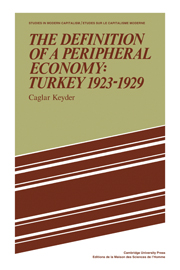Summary
The specificity of a peripheral transition to capitalism lies in the domination of merchant capital during the process of transition. That the economy in question is integrated into the world economy through trade flows makes it imperative for capital in the centre to have recourse to mercantile activity for the purposes of expanding the scale of accumulation. While, however, merchant capital may be subordinate to the requirements of industrial capital in the centre, it becomes the unique carrier of market relations in the periphery. In that sense, the transformation of the periphery takes place under the direction of merchant capital.
By itself, merchant capital does not necessarily induce the development of capitalist relations as it does the expansion of commodity production. It is only during the internationalisation of productive capital that integration with the world economy directly requires the instigation of wage-labour relations. Merchant capital, however, does create the conditions for the development of capitalist relations by helping dissolve the traditional structure, and by making available to potential producers the means of realisation of their output. Yet this availability is highly partial, and it is in this sense that merchant capital may be said to condition the transition to capitalism in the periphery.
The case study we have undertaken provides an example of peripheral structuration during the domination of merchant capital. With the dissolution of their original social formations, peripheral areas cease to reproduce as isolated units. Components of the peripheral economy come to be orientated to world markets, thus becoming integral parts of the world division of labour. The processes of dissolution and structuration through integration characterise the long duration of peripheral transition to capitalism.
- Type
- Chapter
- Information
- The Definition of a Peripheral Economy: Turkey 1923–1929 , pp. 127 - 131Publisher: Cambridge University PressPrint publication year: 1981



